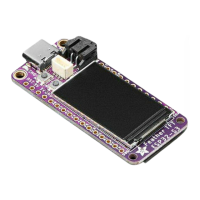// wait for serial port to connect. Needed for native USB port only
delay(10);
}
#endif
// attempt to connect to Wifi network:
Serial.print("Attempting to connect to SSID: ");
Serial.println(ssid);
#if defined(USE_OLED)
display.clearDisplay(); display.setCursor(0,0);
display.print("Connecting to SSID\n"); display.println(ssid);
display.display();
#endif
while (WiFi.status() != WL_CONNECTED) {
delay(500);
Serial.print(".");
}
Serial.println("");
Serial.println("Connected to WiFi");
#if defined(USE_OLED)
display.print("...OK!");
display.display();
#endif
printWifiStatus();
}
uint32_t bytes = 0;
void loop() {
WiFiClientSecure client;
client.setInsecure(); // don't use a root cert
Serial.println("\nStarting connection to server...");
#if defined(USE_OLED)
display.clearDisplay(); display.setCursor(0,0);
display.print("Connecting to "); display.print(SERVER);
display.display();
#endif
// if you get a connection, report back via serial:
if (client.connect(SERVER, 443)) {
Serial.println("connected to server");
// Make a HTTP request:
client.println("GET " PATH " HTTP/1.1");
client.println("Host: " SERVER);
client.println("Connection: close");
client.println();
}
// Check HTTP status
char status[32] = {0};
client.readBytesUntil('\r', status, sizeof(status));
if (strcmp(status, "HTTP/1.1 200 OK") != 0) {
Serial.print(F("Unexpected response: "));
Serial.println(status);
#if defined(USE_OLED)
display.print("Connection failed, code: "); display.println(status);
display.display();
#endif
return;
}
// wait until we get a double blank line
client.find("\r\n\r\n", 4);
©Adafruit Industries Page 220 of 263

